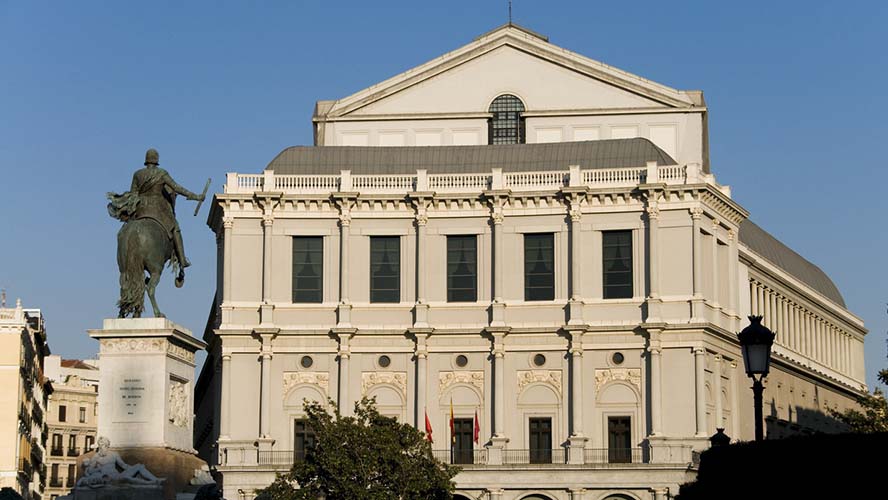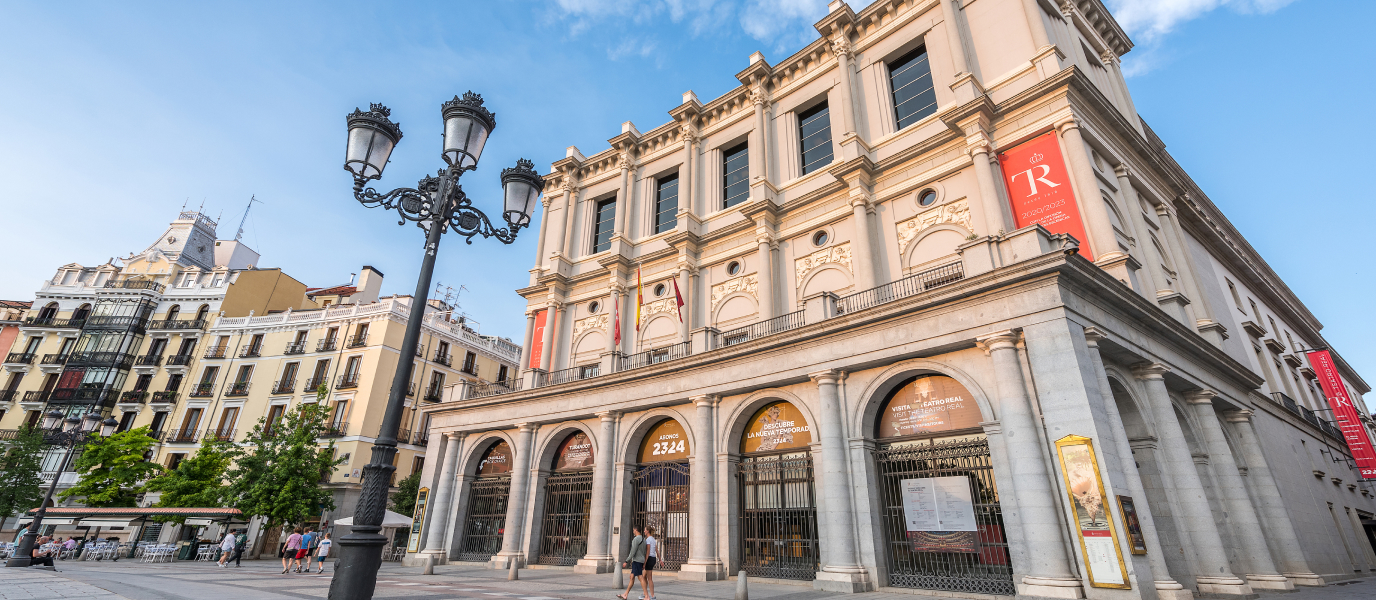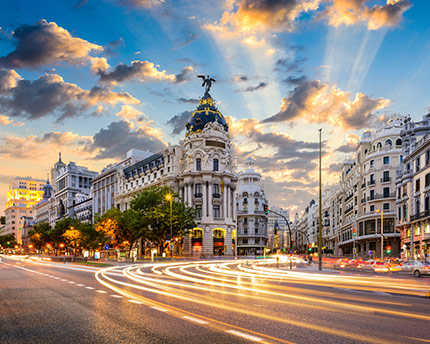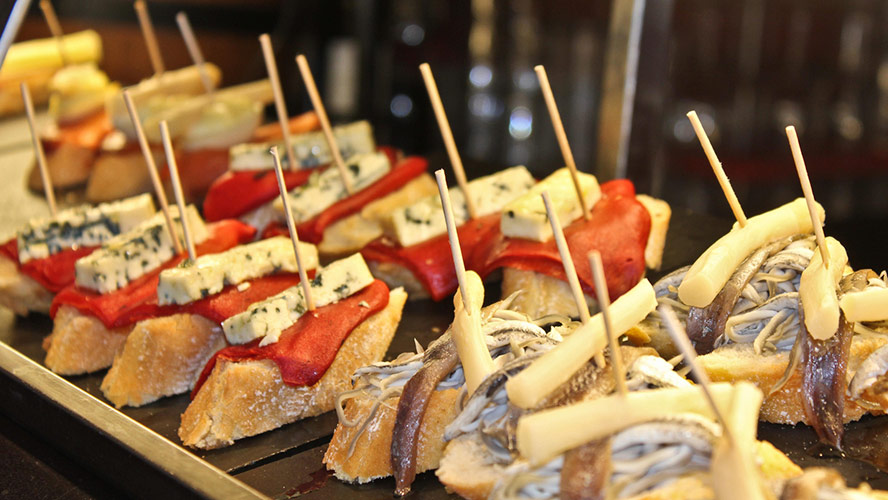In its privileged setting in the very heart of Madrid (between the imposing Plaza de Oriente and the more modest Plaza de Isabel II), the Teatro Real stands as a flagship of the dramatic arts in Spain, and has established itself as a benchmark on the European opera scene. In this article, we tell you the story behind Madrid’s opera house, and explain why you should visit this beautiful building.
Madrid’s first opera house
The present-day Teatro Real occupies the same site as the eighteenth-century Real Teatro de los Caños del Peral, an establishment opened by Philip V in 1738; this was where the Cortes Constituyentes de Cádiz [sessions to determine a new Spanish Constitution] were held in 1814. Four years after this historic event, Ferdinand VII, who believed strongly that Madrid needed a theatre on a par with those of other European capitals, ordered the remodelling of the Plaza de Oriente, which included the building of the Teatro Real.
The edifice was designed by the municipal architect Antonio López Aguado (a protégé of Juan de Villanueva and the figure behind other important buildings in the capital city, including the Puerta de Toledo), and the first stone was laid on 23 April 1818. The work suffered significant delays as a result of the death of the architect and a tight budget. Later, however, Custodio Teodoro Moreno was put in charge of the works, and in 1850, 33 years after building commenced, it was at last ready to be opened.
The Teatro Real suffers subsidence, and is rebuilt
During the first 75 years of its life, the Teatro Real established itself as one of the Old Continent’s great opera institutions. Unfortunately, in 1925 it was badly affected by subsidence, which forced its closure; it then remained closed for a total of 41 years. Needless to say, the Civil War and the post-War period were not favourable times to undertake its reconstruction.
When work on the building finally resumed in 1966, it was converted into an auditorium and became the headquarters of the Real Conservatorio Superior de Música y Escuela de Arte Dramático [Royal Music Conservatory and School of Dramatic Art], a role it continued to perform until 1988. In that year, a decisive move was made to provide Madrid with a first-class theatre, and the remodelling project, undertaken between 1991 and 1997, was entrusted to the architects Manuel Gómez Valcárcel and Francisco Rodríguez de Partearroyo. Spain’s capital could once again boast a distinguished Royal Theatre.
Behind the doors of the Teatro Real de Madrid
This illustrious setting for opera in Madrid has an unusual irregular six-sided floor plan, while its façades are the embodiment of elegant restraint, very much in keeping with the colour scheme of other prestigious buildings in the vicinity: the Royal Palace on the other side of the Plaza de Oriente, and La Almudena Cathedral.
It is well worth going inside, however, as its rooms break free from this austere restraint, providing an explosion of colour—especially in the main auditorium, where the red colour of the stalls stands out in vivid contrast to the gilded balconies. This particular hall—with 28 boxes, 6 floors and seating for 1,746 people—was built in the image and likeness of the theatre of 1850, but incorporates state-of-the-art technology so that members of the audience have a sense of being transported to exactly where the director, actors and musicians want them.

An example of this advanced technology is the system of 18 overlying platforms allowing staging work to take place (so that the scene can change in a matter of seconds), and even enabling simultaneous settings.
The second-floor rooms also deserve special attention, as their exquisite flooring, furniture and lamps from the Royal Glass Factory at La Granja recreate a wonderful atmosphere of nineteenth-century grandeur. The Lebanese cedar woodwork, the marble and the stucco work of the sixth-floor Café del Palacio also invest the area with an aristocratic quality. The Café in addition commands superb views of La Almudena Cathedral, the Royal Palace and the Plaza de Oriente.
Although we have described a few of the Teatro Real’s principal rooms, it is also vitally important not to miss the various support facilities (the rehearsal rooms, individual and communal dressing rooms, and storerooms)—without these it would be impossible to stage the performances successfully.
Guided tours of the Teatro Real de Madrid
Visitors can tour the Teatro Real at their own pace, using one of the audioguides which are available in 5 languages (Spanish, English, French, Italian and Chinese); alternatively, they can join one of the guided tours offered by the opera house. The interesting thing about the guided tours is that they embrace a very wide range of themes, so that visitors can choose a more historically orientated tour, or others that give an insight into the more technical or artistic aspects. There are also tours aimed especially at children, and there are also evening tours, which take place immediately after the performances.
In any case, we believe that the best way to experience an edifice such as this is by attending a concert or, even better, an operatic performance, as this enables you to appreciate aspects beyond the scope of a mere tour, including the auditorium’s acoustics and, of course, the magic of live theatre. In addition, the Teatro Real’s programme maintains a balance between classical and modern works, as well as dance, and concerts featuring different musical genres.
Please turn off your mobile phones: the performance is about to begin!







































































